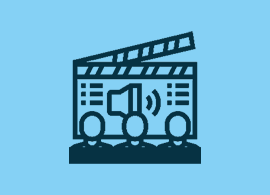Loading...
Voice Over is the process of converting written content from one language (source language) to another (target language), that include types of fields as Medical translation, Legal, Technical, ...etc. And as a service it being divided to sub-services that we provide all in one or separately if needed refers to the production technique where a voice is recorded to be used in a radio, television, film, theater, or other presentations. The voice-over is typically a narration or commentary provided by a voice artist who is not seen on screen and is used to convey information, enhance storytelling, or provide commentary to complement the visuals. Voice overs are commonly used in various media formats such as commercials, documentaries, animated films, and instructional videos to convey messages, tell stories, or provide additional context to the audience.

In this phase, the client discusses and approves the script, storyboard, character brief and any images that would help in the recording. The client decides also the type of voice over he requires, the style, the feel, the texture, the character gender and voice he wants to use.

After collecting creative inputs, the final script, and additional requirements, the project is scheduled for recording. The appropriate voice talent is selected based on language, style, voice type, and other criteria. Once the ideal match is found, the company begins recording in well-prepared studios.

After recording and embedding in the video, the done material is reviewed for any mispronunciation, unclear words or phrases, or grammatical errors before the client receives the final master voice tracks, or voiced clips in the format desired to be distributed on the different platforms and channels.
Dubbing is the process of replacing the original audio track of a video or film with a translated version in a different language. This involves recording the voices of actors in the target language to match the lip movements, tone, and overall synchronization with the original content. Dubbing is commonly used to make audiovisual material accessible to audiences who speak different languages, ensuring a seamless viewing experience while conveying the intended message and cultural nuances

The designated team assembles and arranges all dubbing files (script), preparing them in the original language. This stage ensures the presence and readiness of the source package and media materials, forming the foundation for the entire project.

Indigenous translators and linguists initiate the process of transforming the script into the target language with utmost precision, striving to maintain its original excellence. They incorporate any necessary modifications to ensure cultural and national resonance, making it more appealing to the intended audience.

Actors are chosen based on the specifications provided by the client and the suggestions of the dubbing company. This includes factors like specific sound requirements, voice type, gender preferences for performers, desired age range, and other relevant considerations.

This phase is the most delicate, exacting, and technical in nature. The recording is carried out in a well-equipped studio, with the presence of voice talent, linguists, vocal coaches, and a director overseeing the entire process. The goal is to achieve as close to perfect lip-syncing as possible.

The final phase of the process involves layering the translated tracks that have been recorded. This stage is entirely technical, with editors and sound experts responsible for blending the dubbed audio with the original video. The outcome is a video in a new language that maintains the essence of the original.